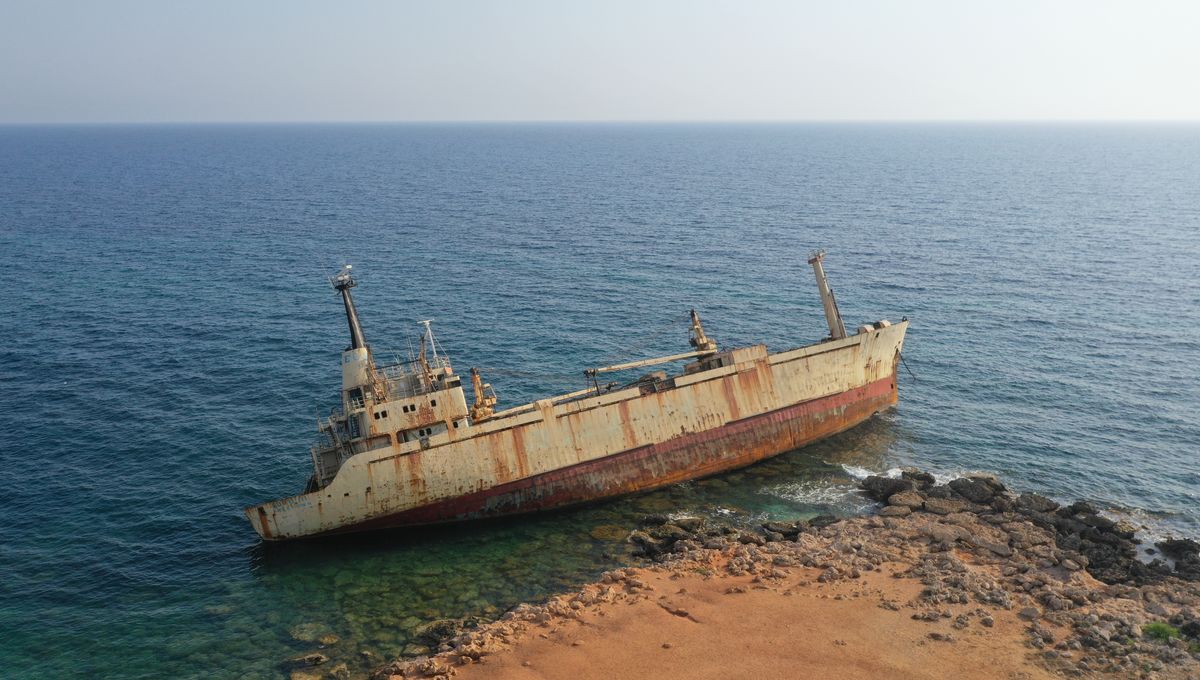
It’s often said that “SOS” – the distress signal put out by troubled ships at sea – means “Save Our Souls” or “Save Our Ship”, but that’s not strictly true.
When the “SOS” distress signal was first developed in the early 20th century, it was chosen simply because it had a distinctive Morse code sequence: three dots / three dashes / three dots (▄ ▄ ▄ ▄▄▄ ▄▄▄ ▄▄▄ ▄ ▄ ▄).
The letters didn’t stand for anything in particular, but they were easy to send and receive in Morse code. If you’re panicking onboard a sinking ship, the last thing you want to send is a complicated code that would be tricky to tap and could be easily misinterpreted by the receiver.
“SOS” only became associated with the phrases “Save Our Souls” or “Save Our Ship” after it was widely adopted. This is an example of a backronym, an existing word or phrase that’s been artificially dragooned into becoming an acronym.
Before introducing a universal distress signal, different countries and telecommunications organizations would use differing signals – which proved to be highly confusing and inefficient in a globalizing world.
In 1904, the Marconi Company telecommunications attempted to roll out the “CQD” distress code, which meant “Seeking you. Distress!” or “All stations. Distress!” Meanwhile, the US used “NC”, which meant “call for help without delay”, and European ships used a variety of different codes.
To ensure doomed ships weren’t becoming “lost in translation,” the International Radiotelegraph Convention in 1906 proposed “ships in distress shall use the following signal: ▄ ▄ ▄ ▄▄▄ ▄▄▄ ▄▄▄ ▄ ▄ ▄ repeated at brief intervals”. The motion was passed and came into effect in 1908, although it took some time for the sailors of the world to take note.
The first documented use of the “SOS” signal by the US was in 1909 when Theodore D Haubner signaled the distress of the SS Arapahoe steamship off Cape Hatteras in North Carolina. However, Haubner still sent the old “CQD” as well, just in case the relatively new signal wasn’t recognized.
When the RMS Titanic struck that infamous iceberg on April 15, 1912, senior wireless operator Jack Phillips initially put out a “CQD” distress call. His junior, Harold Bride, jokingly suggested they should try the new “SOS” call too.
“It’s the new call and it may be your last chance to send it,” Bride told Phillips, according to a New York Times report from 1912. While the cry for help was clocked by surrounding ships, it was clearly too late for the much-hyped “unsinkable ship”.
“SOS” is still widely recognized as a standard distress signal in the 21st century, although Morse code has long stopped being used as a means of marine communication.
Nevertheless, if you are lost on a desert island with little more than a few coconuts and a bundle of palm leaves, there are worse ways to call for help. In 2020, three sailors who had been marooned on a remote Pacific island managed to attract the attention of rescuers by writing a giant SOS message along the sandy beach.
Source Link: What Does "SOS" Mean? It Doesn't Stand For "Save Our Ship”